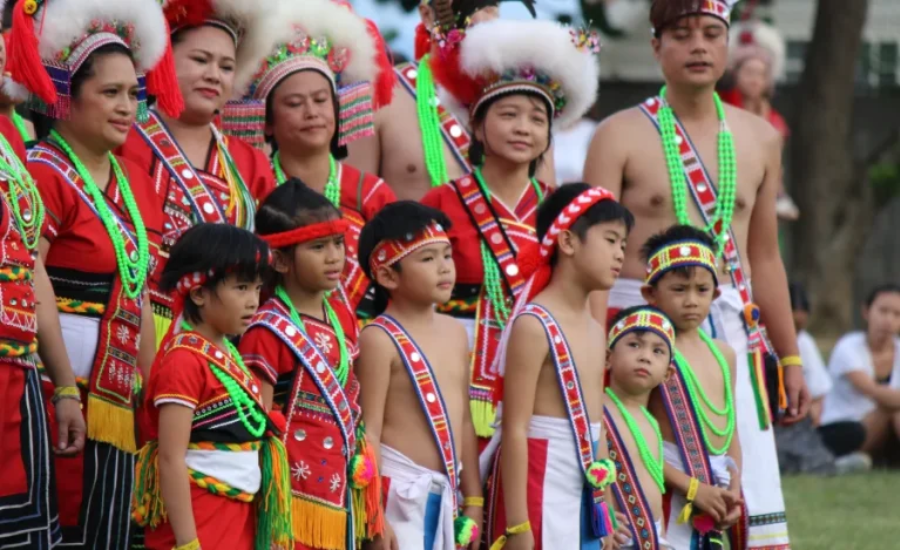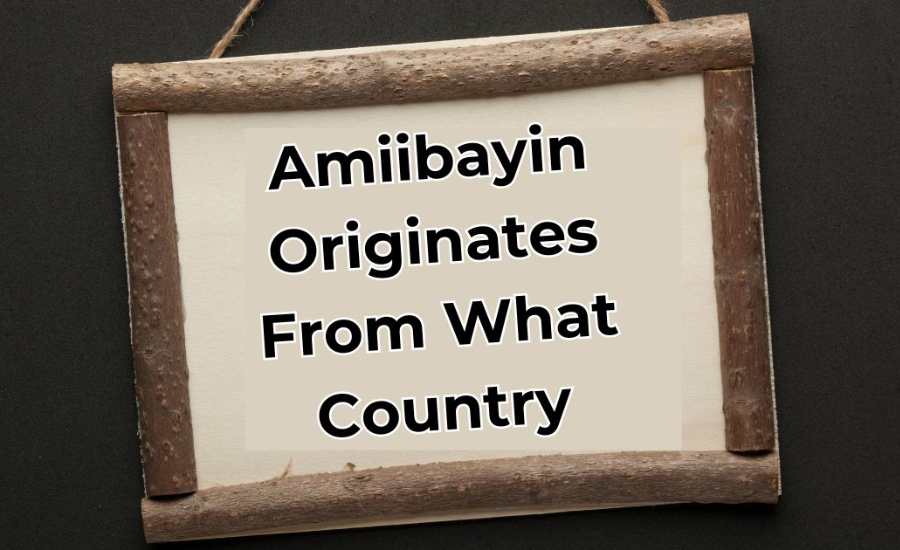The word “Amiibayin” originates from what country, reflecting the intricate fusion of modern technology and traditional gaming culture. Country of Origin: Around the world, diverse social customs contribute to the richness of our global cultural landscape, with each tradition offering a unique backstory and meaning. One such custom is amiibayin, a term that may not be widely known but holds considerable cultural value. In this exploration, we uncover the origins of amiibayin, emphasizing its profound cultural significance.
By investigating the roots of amiibayin, we not only learn about its historical background but also gain insight into the values, traditions, and way of life of the communities that practice it. This examination broadens our appreciation of the complex social dynamics that shape various cultural identities globally.
The Origin of Amiibayin: Uncovering Its Cultural Roots
When delving into the question of which country Amiibayin originates from, it’s vital to recognize that terms and names often carry profound cultural and historical significance, reflecting the identity and heritage of a specific region. Although there is limited readily available information on the term Amiibayin, investigating its origins opens up the possibility of exploring a rich tapestry of linguistic, geographic, and cultural layers.
Names that appear unfamiliar or unique often trace back to ancient languages, ancestral traditions, or smaller communities that prioritize preserving their distinct identities. Understanding its origin requires a deeper exploration of local traditions, oral histories, and the linguistic nuances that may have kept this term alive within a particular cultural group.
The search for Amiibayin’s roots is not just about identifying a place but about recognizing the cultural importance attached to it. The communities that uphold such terms often view them as a link to their ancestral past, preserving their unique cultural practices and values through language. In this sense, discovering the origin of Amiibayin becomes more than just a geographic inquiry; it transforms into a journey into the heart of a culture that values the maintaining its identity, cultural traditions, and linguistic heritage.
By examining these elements, we not only seek to uncover the geographical origins of Amiibayin but also gain insight into the broader historical and cultural contexts that shape the lives and beliefs of those who use and cherish this term.
Amiibayin: Understanding Its Meaning and Significance

Before exploring the question of which country Amiibayin originates from, it is crucial to first define what Amiibayin represents. Amiibayin refers to a culturally specific tradition or ritual, often rooted in communal activities. The term itself carries symbolic meaning, representing unity, spirituality, or a unique form of expression tied to the culture that practices it.
While Amiibayin may not be widely recognized on a global scale, within the community or region where it originates, it plays an essential role in the lives of its people. This tradition could encompass a variety of practices, such as ceremonies, storytelling, or even artistic performances, all of which serve to convey important cultural values. Whether it’s a ritual that strengthens communal bonds or a form of spiritual expression, Amiibayin reflects the shared beliefs and customs of its practitioners.
The significance of Amiibayin goes beyond the act itself—it embodies the deeper connection between people and their heritage. For the community involved, this practice might serve as a reminder of their ancestors’ traditions, reinforcing their identity and shared history. It can also act as a platform for artistic and creative expression, allowing individuals to contribute to the preservation of their culture through performances, rituals, or storytelling.
Amiibayin is more than just a cultural activity; it’s a living tradition that sustains the cultural identity of a people. It highlights the values of unity, spirituality, and creativity, making it an integral part of the community’s way of life. Understanding what Amiibayin is provides a foundation for exploring the rich cultural context and geographical origins from which it stems.
The Modern Evolution of Amiibayin
As we explore the roots of amiibayin, it’s equally important to understand how this tradition has transformed in modern times. Like many cultural customs across the world, amiibayin has been shaped by the forces of globalization, modernization, and the rapid pace of urbanization.
In the urbanized regions of the Philippines, where modernization is most prominent, the practice of amiibayin has seen a decline, particularly among the younger generations who are increasingly drawn to contemporary lifestyles that often diverge from traditional customs. Despite this shift, rural communities continue to uphold the practice of amiibayin, where it remains a strong and enduring part of daily life. In these areas, the custom serves as a vital link to the community’s cultural heritage, preserving the values and practices passed down through generations.
This cultural preservation is not just confined to rural settings; there is a growing movement within the Philippines to protect and promote traditional customs like amiibayin. Cultural advocates, artists, and scholars are playing a key role in this effort, recognizing amiibayin as a representation of the country’s rich historical and cultural identity.
In recent years, the elements of amiibayin have found their way into modern forms of expression. Filipino artists are incorporating aspects of this tradition into theater, music, and visual arts, creating a fusion of the old and the new. This blend allows amiibayin to maintain its relevance in an increasingly modernized world, showcasing how traditional practices can adapt and thrive in contemporary settings. By intertwining amiibayin with modern artistic practices, these efforts highlight the resilience of Filipino cultural identity and its ability to evolve while remaining deeply connected to its roots.
Clues to the Possible Origins of Amiibayin
To address the question of which country Amiibayin originates from, we need to explore several potential sources. One theory is that Amiibayin could have its roots in a nation known for its linguistic diversity, where unique names are vital expressions of cultural identity. Countries with rich indigenous traditions or a deep commitment to preserving native languages might provide valuable clues.
In many African, South Asian, and Southeast Asian regions, names often carry profound significance, reflecting personal traits, spiritual beliefs, or elements of the natural environment. These names serve as a link between individuals and their heritage, often embodying the essence of their community and traditions.
Could Amiibayin have originated from one of these culturally rich areas? Some linguistic scholars suggest that the phonetic patterns of the term might hint at African or South Asian roots, though definitive confirmation would require further in-depth research. The combination of sounds and structure in the word could align with naming conventions found in these regions, where names frequently encompass spiritual and communal values.
While the exact origin of Amiibayin remains uncertain, the possibility that it emerges from cultures with a strong emphasis on names as cultural markers is compelling. Such names often transcend mere labels, acting as symbols of identity and connections to a broader social and spiritual context. More research into these regions’ linguistic and cultural traditions could yield additional insights into the possible origins of Amiibayin, offering a deeper understanding of its significance within the cultural framework it belongs to.
The Influence of Religion on Amiibayin
To gain a deeper understanding of Amiibayin’s origins, it’s important to explore the role religion plays in shaping this tradition. While the Philippines is predominantly Catholic due to centuries of Spanish colonization, the country also has a rich history of indigenous spiritual beliefs that have profoundly influenced practices like Amiibayin.
Amiibayin is often tied to native religious traditions, yet over time, it has integrated elements of Christianity, resulting in a unique fusion of ancient and modern spiritual practices. In certain regions, Amiibayin rituals may involve invoking nature spirits or honoring ancestors, while in other areas, the ceremonies may center around Catholic saints and religious celebrations.
This blending of religious traditions is a testament to the resilience and adaptability of Filipino culture. Despite the influence of Western religious practices, customs like Amiibayin have managed to retain their essential core, reflecting the country’s indigenous heritage. This fusion of belief systems highlights how Filipino culture has embraced both its pre-colonial spiritual roots and the Christian faith introduced during colonization, creating a distinctive spiritual practice that has evolved over time.
Amiibayin’s ability to incorporate diverse religious elements while preserving its cultural essence showcases the depth of Filipino spirituality and the enduring connection between the people and their ancestral beliefs. It serves as a reminder of the nation’s complex cultural identity, rooted in both indigenous traditions and centuries of religious transformation.
Exploring Amiibay: The Premier Marketplace for Collectors
Amiibay is a specialized online marketplace designed for collectors and gamers, particularly those with a passion for amiibo figures. This platform offers a streamlined space where users can buy, sell, or trade their amiibo collectibles, serving a vibrant community of enthusiasts who are united by their love for Nintendo’s iconic figurines.
The platform allows members to create personalized profiles showcasing their collections and listings, making it easy for users to interact with potential buyers or traders. With its user-friendly design, Amiibay not only simplifies the transaction process but also promotes a sense of connection among collectors worldwide.
What sets Amiibay apart is its strong focus on fostering an amiibo-centric community. It goes beyond a traditional marketplace, acting as a hub for discussions, collecting tips, and advice related to amiibo figures. This active engagement transforms Amiibay into more than just a trading platform—it’s a dynamic space where collectors can expand their knowledge, share their passion, and build relationships with others who share the same interests. Through this blend of commerce and community, Amiibay has become an essential destination for anyone invested in the world of amiibo collecting.
The Cultural Importance of Unique Names

When investigating the question, “Which country does Amiibayin come from?” it’s important to acknowledge the cultural importance that distinctive names frequently hold. In many societies, names are not merely identifiers; they are deeply symbolic, representing familial heritage, ancestral ties, or personal values that families wish to pass on to future generations. In this sense, Amiibayin might embody more than just a name—it could be a meaningful representation of tradition, community identity, or spiritual beliefs.
Therefore, determining the origin of Amiibayin is not just about geography—it could provide insight into the cultural values and belief systems of the people who use the name. It may reflect traditions surrounding family, spirituality, or the broader community, offering a window into the rich tapestry of meaning that names carry across various cultures. Understanding the cultural context behind Amiibayin could reveal how unique names play an essential role in preserving cultural heritage and transmitting core values across generations.
Uncovering the Origins of Amiibayin in the Philippines
To truly grasp the roots of amiibayin, it’s vital to examine the historical and cultural evolution of the Philippines.
Before the arrival of colonizers, indigenous Filipino communities engaged in various rituals and communal ceremonies that paid homage to their gods, ancestors, and the natural world. These early practices formed the foundation of amiibayin, fostering a deep sense of unity and reinforcing community ties. Rituals like these were integral to daily life, serving not only as spiritual expressions but also as opportunities to strengthen social bonds within villages and tribes.
The arrival of Spanish colonization in the 16th century marked a significant shift in the cultural landscape. Despite these pressures, amiibayin managed to survive, particularly in remote and rural areas where indigenous traditions held strong. The resilience of amiibayin highlights the enduring cultural identity of these communities, illustrating how deeply ingrained practices could adapt and persist despite external influences.
Today, amiibayin continues to serve as a reminder of the Philippines’ rich cultural tapestry, showcasing the ability of indigenous customs to endure and evolve through centuries of change. By tracing the evolution of amiibayin, we gain deeper insights into the strength and adaptability of Filipino culture, particularly in the face of colonization and modernization.
The Various Versions of Amiibay: Exploring Differences and Challenges
Amiibay offers multiple versions, each with its own distinct features, benefits, and obstacles for users. One of the main attractions for many is the vibrant communities that develop within specific regional versions of the platform. Connecting with local collectors and traders can personalize the experience and foster a sense of belonging within the amiibo enthusiast community.
However, when examining the question of where Amiibayin originates, it becomes evident that not all versions of Amiibay are consistent across different countries. Each region may have its own set of rules and regulations governing trading, which can sometimes create confusion for users, particularly those new to the platform. Navigating the differences in trading guidelines or item availability across regions can be challenging, making it difficult for some collectors to participate smoothly.
Language and platform accessibility are also significant factors affecting the user experience. Certain versions of Amiibay may be more user-friendly based on language or technological preferences, which can be a barrier for non-native speakers or users who face difficulty with a specific interface. This can limit their ability to fully engage with the community or trade as effectively as they would in a more familiar version of the platform.
On the other hand, regional exclusivity can also work to Amiibay’s advantage. Limited edition releases in certain areas spark excitement and anticipation among collectors. However, this exclusivity can drive up demand, resulting in higher prices and fiercer competition among users eager to get their hands on rare items.
While each version of Amiibay offers unique experiences, they also present challenges that users must carefully consider. Understanding where Amiibayin originates and how it influences these variations can help users navigate the platform more effectively and enhance their overall experience in the amiibo trading community.
Facts
- Cultural Significance:
Amiibayin is a culturally specific tradition or ritual, often rooted in communal activities that can be religious, social, or celebratory.
- Origins:
The exact origins of the term “Amiibayin” are unclear, but it may be linked to specific cultural or tribal heritages, possibly within lesser-known communities.
- Historical Context:
The practice of amiibayin has evolved over time, influenced by factors such as globalization, modernization, and urbanization, particularly in the Philippines.
- Religious Influences:
Amiibayin reflects a blend of indigenous spiritual traditions and elements of Christianity, showcasing the adaptability of Filipino culture.
- Modern Adaptation:
Contemporary Filipino artists are integrating aspects of amiibayin into various art forms, allowing the tradition to remain relevant.
- Cultural Preservation:
Despite the decline in urban areas, rural communities continue to uphold amiibayin, preserving their cultural heritage and values.
- Unique Names:
The term “Amiibayin” highlights the significance of unique names in various cultures, representing identity, heritage, and values.
FAQs
Q: What does Amiibayin represent?
A: Amiibayin refers to a tradition or ritual that embodies cultural values, unity, and spirituality, often tied to communal activities.
Q: Which country does Amiibayin originate from?
A: While the exact origin is uncertain, it is suggested that Amiibayin may have roots in culturally rich nations like the Philippines, Nigeria, or India, where unique names hold cultural significance.
Q: How has Amiibayin evolved in modern times?
A: Amiibayin has been influenced by globalization and modernization, with younger generations in urban areas showing less engagement, while rural communities continue to practice it.
Q: What role does religion play in Amiibayin?
A: Amiibayin is tied to both indigenous spiritual beliefs and Catholicism, creating a unique fusion that reflects the resilience of Filipino culture.
Q: Why is the study of Amiibayin important?
A: Understanding Amiibayin offers insights into the cultural dynamics, values, and identities of the communities that practice it, preserving their heritage.
Conclusion
In summary, amiibayin is a culturally rich tradition that reflects the complex interplay of history, spirituality, and community in the Philippines and potentially other regions. As societies modernize, the resilience of traditions like amiibayin is essential for maintaining cultural heritage. Through the integration of modern artistic expressions and the dedication of cultural advocates, amiibayin continues to thrive, serving as a vital link between the past and the present. Understanding amiibayin not only deepens our appreciation for diverse cultural practices but also underscores the importance of preserving unique identities in an ever-evolving world.
Don’t miss out on updates and alerts – stay connected! : News Link Times
